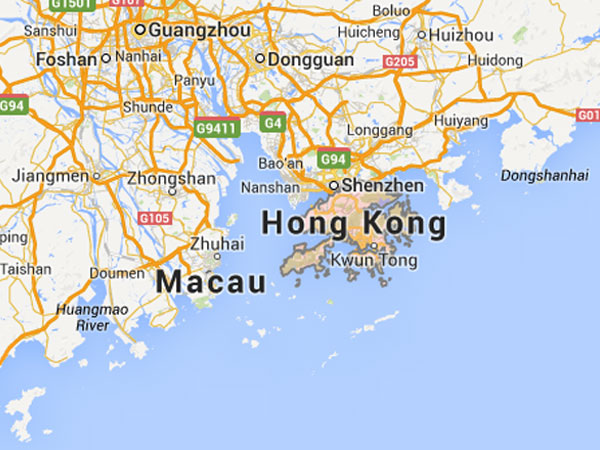Hong Kong’s pink dolphins at risk of disappearing
HONG KONG, China — As Hong Kong seeks to expand its international airport and with a major new bridge project under way, campaigners warn that the dwindling number of much-loved pink dolphins in surrounding waters may disappear altogether.
Conservationists say their repeated concerns have fallen on deaf ears, with what they describe as a “rapid” decline of the mammal in the past few decades.
The Chinese white dolphin — popularly known as the pink dolphin due to its pale pink coloring — draws scores of tourists daily to the waters north of Hong Kong’s Lantau island.
It also became Hong Kong’s official mascot for the handover ceremony in 1997, when Britain returned the territory to China.
But despite the affection felt towards the dolphin, campaigners say there may soon be none left.
Article continues after this advertisementThe proposed construction of a third runway at Hong Kong’s busy Chek Lap Kok airport could be the nail in the coffin, they say.
Article continues after this advertisement“We think that if that project goes ahead, then it will probably drive the dolphin away from Hong Kong waters,” said Samuel Hung, chairman of the Hong Kong Dolphin Conservation Society, who has been going out to sea at least twice a week to monitor dolphin activity for almost 20 years.
“In some ways it seems like we are pushing them closer and closer to the edge of the cliff and if we’re making that final push, they will be gone forever. I think now is the time to get our act together.”
Hung says there are only around 60 dolphins left in Hong Kong waters — a drop from 158 in 2003.
“The dolphin decline is caused by a number of factors, including overfishing and environmental pollution… but I think the major contribution is coming from the increase of high-speed ferry traffic,” Hung said.
The dolphins have either gone to neighboring Chinese waters or may have died off, says Hung.
Habitats destroyed
Dolphin habitats have also been affected by the ongoing construction of a 50-kilometre (30-mile) bridge connecting Hong Kong to the gambling enclave of Macau.
The bridge looms on the horizon behind the village of Tai O, on the western tip of Lantau island, from where dozens of dolphin tours go out daily.
“Since the construction of the bridge in 2012 the situation has worsened,” says Hung, who blames land reclamation encroaching on dolphin habitats and continuing construction creating disturbance.
The WWF recently placed volunteers on the dolphin-spotting boats to tell tourists about the problems the animals are facing.
“Pollution is quite serious in the air and water… We worry about the marine life being affected,” said Hong Kong bank worker Yeung Ka-yan, 30, after taking a short boat trip.
“We were a little disappointed,” added her boyfriend, a 26-year-old chef from Taiwan, after failing to spot any dolphins — a scenario that could become all too common in the years ahead if conservationists’ fears are realized.
Disaster awaits
Tourist boat operator Wong Yung-kan, who was born in Tai O and has lived most of his life there, said residents used to dislike the dolphins because they ate catch from fishermen’s nets, when fishing was the village’s most important trade.
“Now the fishing industry has reduced in size, we have had to change our line of work from fishing to taking tourists out on boats to see dolphins,” said Wong, 67.
Dolphin-watching accounts for 10 percent of Tai O’s tourism business.
“Of course we want them to remain here… the tourists will be happier and we’ll be happier as well,” adds Wong.
Unlike conservationists, he says he is optimistic for the dolphins’ future — but if the worst happens, villagers will adapt as they did before.
“These natural things won’t disappear… if you are not actively eliminating them, then they won’t go away,” Wong told AFP.
“(But) if this species has to go extinct, there’s nothing we can do about it. We can find another way to make a living. People know how to cope with change.”
The government refused to be interviewed but told AFP in an email that potential impacts the proposed third-runway could have on the pink dolphins had been “properly assessed and addressed”.
“To compensate for the permanent loss of Chinese white dolphin habitats arising from the land formation works, the designation of a new marine park of approximately 2,400 ha (24 square kilometers) in the waters north of the third-runway project has been proposed,” the statement from the agriculture, fisheries and conservation department said.
But campaigners criticized the plan, saying the marine park would not be established until at least 2023, when reclamation work for the third runway is expected to finish.
“We don’t even know whether the dolphin can hang on and survive and wait,” Hung said.
“We have been following some of them for nearly 20 years so those are our old friends.
“They don’t realize that there is more disaster waiting for them.”
